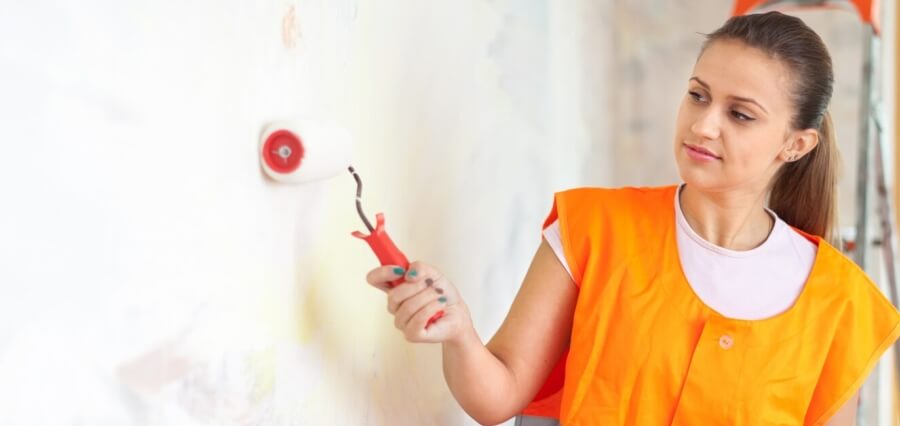Painting the exterior of your home can significantly enhance its curb appeal and protect it from the elements. However, it’s a project that requires careful planning and execution to achieve a professional-looking finish. Avoiding common mistakes can save you time, money, and frustration.
In this detailed blog post, we’ll explore the most common mistakes homeowners make when painting their home’s exterior and provide tips on how to avoid them.
Skipping Proper Surface Preparation
Importance of Surface Preparation
Proper surface preparation is crucial for a successful paint job. It ensures that the paint adheres well and lasts longer. Neglecting this step can lead to peeling, cracking, and uneven coverage.
Common Preparation Mistakes
Not Cleaning the Surface: Dirt, dust, and mildew can prevent paint from adhering properly. Always clean the exterior thoroughly before painting.
Ignoring Repairs: Cracks, holes, and damaged siding need to be repaired. Painting over damaged areas can worsen the problem and ruin the finish.
Failing to Remove Old Paint: Loose or peeling paint must be scraped off. Painting over it will result in an uneven surface and poor adhesion.
How to Avoid These Mistakes
Wash the Exterior: Use a power washer or a hose with a scrub brush to remove dirt and grime.
Repair Damages: Fill cracks and holes with caulk or wood filler, and replace damaged siding or trim.
Scrape and Sand: Remove loose paint and sand the surface to create a smooth base for the new paint.
Using Low-Quality Paint and Materials
Impact of Low-Quality Products
Using low-quality paint and materials can lead to poor coverage, fading, and frequent repainting. Investing in high-quality products is essential for a durable and professional finish.
Common Mistakes with Paint and Materials
Choosing Cheap Paint: Low-cost paints often lack the necessary pigments and binders, resulting in poor coverage and durability.
Using the Wrong Type of Paint: Interior paint is not suitable for exterior use. Exterior paint is formulated to withstand weather conditions and UV exposure.
Skimping on Brushes and Rollers: Cheap brushes and rollers can leave streaks and lint in the paint.
How to Avoid These Mistakes
Invest in Quality Paint: Choose high-quality exterior paint from reputable brands. It may cost more initially but will save you money in the long run.
Select the Right Paint: Use paint specifically designed for exterior use, considering the surface material and climate.
Use Quality Tools: Invest in high-quality brushes, rollers, and other painting tools for a smoother application and better results.
Ignoring Weather Conditions
Importance of Weather in Painting
Weather conditions play a critical role in the outcome of an exterior paint job. Painting under unfavorable conditions can lead to poor adhesion, uneven drying, and paint defects.
Common Weather-Related Mistakes
Painting in Extreme Temperatures: Very hot or cold weather can affect paint application and drying.
Painting in High Humidity: High humidity can cause paint to dry slowly and lead to blistering and peeling.
Ignoring Rain Forecasts: Painting before rain can wash away fresh paint and ruin the finish.
How to Avoid These Mistakes
Check the Weather Forecast: Choose a period with mild temperatures and low humidity. Ideal painting temperatures are between 50°F and 85°F.
Avoid Windy Conditions: Wind can blow debris onto wet paint and cause uneven drying.
Plan for Dry Weather: Ensure there is no rain forecasted for at least 24 hours after painting.
Not Priming the Surface
Role of Primer
Primer is essential for creating a uniform surface and improving paint adhesion. It also helps cover stains and provides a base for the topcoat.
Common Priming Mistakes
Skipping Primer: Not using primer can result in poor paint adhesion and uneven coverage.
Using the Wrong Primer: Different surfaces require specific types of primer for optimal results.
How to Avoid These Mistakes
Always Use Primer: Apply a coat of primer before painting, especially on bare wood, metal, or heavily stained surfaces.
Choose the Right Primer: Use a primer designed for the material you’re painting and compatible with the topcoat you plan to use.
Incorrect Application Techniques
Importance of Proper Application
Applying paint correctly ensures a smooth, even finish and prevents issues like streaks, drips, and lap marks.
Common Application Mistakes
Overloading the Brush or Roller: Applying too much paint at once can cause drips and uneven coverage.
Painting Too Quickly: Rushing the job can lead to missed spots and poor coverage.
Ignoring the Wet Edge Rule: Not maintaining a wet edge can result in lap marks where sections of paint overlap.
How to Avoid These Mistakes
Load Brushes and Rollers Properly: Dip the brush or roller lightly and tap off excess paint. Apply thin, even coats.
Take Your Time: Work methodically, section by section, ensuring full coverage.
Maintain a Wet Edge: Keep a wet edge by working quickly enough to blend each new section of paint into the previous one before it dries.
Neglecting Safety Precautions
Safety in Exterior Painting
Exterior painting often involves working at heights and using chemicals. Prioritizing safety is essential to prevent accidents and injuries.
Common Safety Mistakes
Not Using Ladders Properly: Incorrect ladder use can lead to falls and injuries.
Ignoring Protective Gear: Failing to wear protective gear can expose you to harmful chemicals and injuries.
Inadequate Ventilation: Painting in poorly ventilated areas can cause harmful fume buildup.
How to Avoid These Mistakes
Use Ladders Safely: Ensure ladders are stable and positioned on level ground. Don’t overreach and always maintain three points of contact.
Wear Protective Gear: Use gloves, safety glasses, masks, and long sleeves to protect against chemicals and physical injuries.
Ensure Ventilation: When using solvents or working in enclosed spaces, ensure adequate ventilation to disperse fumes.
Poor Timing and Scheduling
Planning the Project
Proper timing and scheduling are crucial for a successful paint job. Rushing the project or poor planning can lead to subpar results and unnecessary stress.
Common Timing Mistakes
Underestimating Time: Not allocating enough time can lead to rushed work and mistakes.
Ignoring Drying Times: Not allowing sufficient drying time between coats can affect the finish and durability.
Disrupting Routine: Scheduling painting at inconvenient times can disrupt daily activities and cause frustration.
How to Avoid These Mistakes
Plan Ahead: Allocate sufficient time for each step of the process, including preparation, priming, painting, and drying.
Respect Drying Times: Follow the manufacturer’s recommended drying times between coats to ensure a durable finish.
Choose the Right Time: Schedule the project when it causes the least disruption to your routine and daily activities.
Inadequate Paint Coverage
Importance of Coverage
Achieving adequate paint coverage ensures a uniform and durable finish. Poor coverage can lead to uneven color and premature wear.
Common Coverage Mistakes
Skipping a Second Coat: One coat is often not enough for full coverage and durability.
Not Mixing Paint Properly: Paint that isn’t thoroughly mixed can result in inconsistent color and coverage.
Using the Wrong Tools: Using the wrong type of brush or roller can affect the coverage and finish.
How to Avoid These Mistakes
Apply Multiple Coats: Apply at least two coats of paint, allowing proper drying time between each coat.
Mix Paint Thoroughly: Stir paint thoroughly before and during application to maintain consistent color and texture.
Use the Right Tools: Choose the appropriate brushes and rollers for the paint type and surface to ensure even coverage.
Conclusion
Painting the exterior of your home is a significant undertaking that can dramatically improve its appearance and protect it from the elements. By avoiding these common mistakes and following the tips provided, you can achieve a professional-looking finish that lasts. Proper surface preparation, using high-quality materials, paying attention to weather conditions, and applying paint correctly are all critical steps in the process. With careful planning and attention to detail, your exterior painting project can be a rewarding and successful endeavor.














